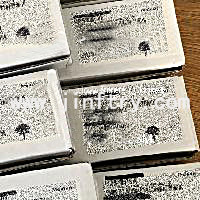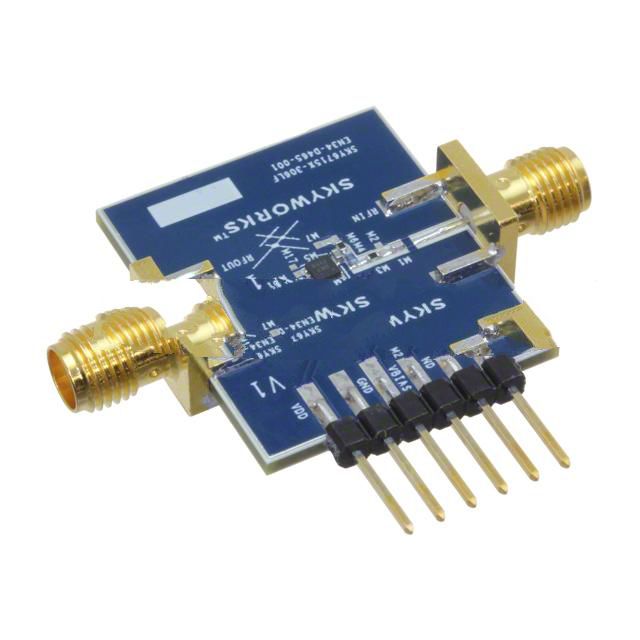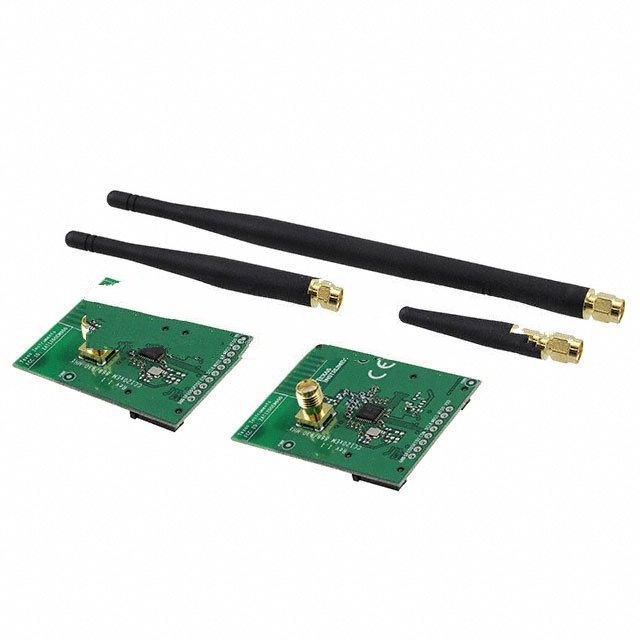LMV228SDEVAL Product Introduction:
Texas Instruments Part Number LMV228SDEVAL(RF Evaluation and Development Kits, Boards), developed and manufactured by Texas Instruments, distributed globally by Jinftry. We distribute various electronic components from world-renowned brands and provide one-stop services, making us a trusted global electronic component distributor.
LMV228SDEVAL is one of the part numbers distributed by Jinftry, and you can learn about its specifications/configurations, package/case, Datasheet, and other information here. Electronic components are affected by supply and demand, and prices fluctuate frequently. If you have a demand, please do not hesitate to send us an RFQ or email us immediately sales@jinftry.com Please inquire about the real-time unit price, Data Code, Lead time, payment terms, and any other information you would like to know. We will do our best to provide you with a quotation and reply as soon as possible.
Introducing the Texas Instruments LMV228SDEVAL, a versatile and high-performance evaluation board designed to showcase the capabilities of the LMV228SD operational amplifier. With its advanced features and wide range of applications, this evaluation board is the perfect tool for engineers and designers looking to optimize their circuit designs.
The LMV228SDEVAL features a low input offset voltage of only 1.5mV, ensuring accurate and precise signal amplification. Its low input bias current of 1pA minimizes the impact of input current on the overall performance of the circuit. Additionally, the LMV228SDEVAL offers a high gain bandwidth product of 10MHz, enabling it to handle high-frequency signals with ease.
This evaluation board is ideal for a variety of applications, including audio amplification, sensor signal conditioning, and precision instrumentation. Its low noise and distortion characteristics make it suitable for audio applications, ensuring clear and high-fidelity sound reproduction. In sensor signal conditioning, the LMV228SDEVAL provides accurate amplification and filtering of sensor signals, enhancing the overall performance of the system. Furthermore, its high precision and low offset voltage make it an excellent choice for precision instrumentation, where accuracy is paramount.
With its exceptional performance and wide range of applications, the Texas Instruments LMV228SDEVAL is the perfect evaluation board for engineers and designers seeking to optimize their circuit designs. Experience the power and versatility of the LMV228SD operational amplifier with the LMV228SDEVAL evaluation board.
RF Evaluation and Development Kits, Boards are specialized tools designed for the design, testing, and evaluation of radio frequency (RF) integrated circuits. This kit/board integrates a complete RF subsystem, including RF front-end, signal processor, power management unit, necessary interface circuits, as well as necessary testing points and debugging tools. It allows engineers to quickly build and validate the performance of RF circuits in the early stages of development, including key parameters such as gain, noise figure, linearity, frequency response, etc. The RF evaluation and development kit typically adopts a modular design, making it easy for users to configure and expand according to specific needs. It also provides rich development documentation and example code to help users accelerate the development process. In addition, the kit also supports multiple communication protocols and standards, such as GSM, LTE, Wi Fi, Bluetooth, etc., providing comprehensive support for the development of wireless communication devices.
Application
RF Evaluation and Development Kits, Boards are widely used in RF circuit design, testing and evaluation in wireless communication, Internet of Things, automotive electronics, aerospace and other fields. In the field of wireless communication, it has become an indispensable tool in the research and development of communication devices such as mobile phones, base stations, and wireless sensors, helping engineers quickly verify the performance of RF modules and optimize design solutions. In the field of IoT, RF evaluation and development kits and boards support various IoT communication protocols such as Low Power Wide Area Network (LPWAN), Zigbee, LoRa, etc., providing strong support for the research and development of IoT devices. In addition, in the field of automotive electronics, with the rapid development of autonomous driving and vehicle networking technology, RF evaluation and development kits and boards are widely used in the research and development of key components such as automotive radar and in vehicle communication systems. The aerospace industry has stricter requirements for RF technology, and the RF evaluation and development kit and board's high precision, reliability, and scalability make it the preferred tool for RF circuit design and verification in this field.
FAQ about RF Evaluation and Development Kits, Boards
-
1. What is a radio frequency integrated circuit?
An integrated circuit specially designed for radio frequency signal processing
A radio frequency integrated circuit (RFIC) is an integrated circuit specially designed for radio frequency signal processing. Radio frequency signals usually refer to electromagnetic wave signals with frequencies between a few kilohertz and tens of gigahertz, which are crucial in wireless communications, remote control, radar and other radio frequency applications.
Definition and function of radio frequency integrated circuits
A radio frequency integrated circuit (RFIC) is an integrated circuit specially designed for radio frequency signal processing. It can integrate multiple functional modules (such as amplifiers, oscillators, modems, etc.) on a single chip, thereby reducing the complexity and cost of the system. The frequency range of RFIC is usually from 300 MHz to tens of GHz, suitable for various radio frequency applications.
-
2. What is a development board?
Embedded system development circuit board
A development board (demoboard) is a circuit board used for embedded system development. It includes a series of hardware components such as a central processing unit, memory, input devices, output devices, data paths/buses, and external resource interfaces. Development boards are generally customized by embedded system developers according to development requirements, or they can be designed by users themselves.
Basic components of development boards
The main components of development boards include:
Central processing unit: responsible for processing and executing instructions.
Memory: used to store programs and data.
Input devices: such as keyboards, touch screens, etc., used to receive user input.
Output devices: such as displays, speakers, etc., used to output information.
Data paths/buses: responsible for data transmission.
External resource interfaces: used to connect external devices.
-
3. What does a development kit do?
Development kits have many functions in software development, mainly including the following aspects:
Simplify the development process: Development kits usually integrate many interfaces such as simulation, input and output, USB, LCD, network, etc., connect to the computer through the USB interface, and have functions such as high-speed code download, online debugging, breakpoints, single step, variable observation, register observation, etc., to achieve real-time online simulation and debugging of the microcontroller. This helps beginners and designers to quickly evaluate and develop a variety of applications, and become familiar with hardware principles and protocol stacks.
Provide a comprehensive development environment: For example, Android Studio is a fully integrated open source development environment that provides a Gradle-based management system that provides greater flexibility in the build process. It comes with a fast simulator that can install and run applications on virtual devices faster and simulate different configurations and functions. In addition, Android Studio also provides push notifications, performance monitoring and other functions, and is the official IDE for developing Android applications.
Support multiple devices and platforms: HUAWEI DevEco Studio is an integrated development environment (IDE) built on the open source version of IntelliJ IDEA Community, which provides basic functions such as project management, code editing, interface preview, compilation and construction, and code debugging. It also integrates performance tuning tools, device simulation tools, command line tools, etc. to help developers solve problems in specific areas. DevEco Testing is a test suite officially provided by Hongmeng, which supports a variety of devices such as mobile phones, folding screens, tablets, smart screens, watches, speakers, etc., and provides performance, power consumption, stability, compatibility and other test standards.
Promote IoT development: Niobe WiFi-IoT industry IoT development kit adopts a three-layer assembly structure design, supports OpenHarmony, and integrates multiple security capabilities and functions to connect multiple ecosystems. By providing a variety of functional expansion boards, developers can quickly make IoT product prototypes based on the OpenHarmony solution, shorten the product development cycle, and quickly achieve mass production.
Improve development efficiency: Development kits usually contain multiple related files and resources to simplify the software development, deployment and maintenance process. By organizing and managing source code, binary files, configuration files, and documents, developers can manage and use these resources more efficiently and improve development efficiency.
 Lead free / RoHS Compliant
Lead free / RoHS Compliant




























